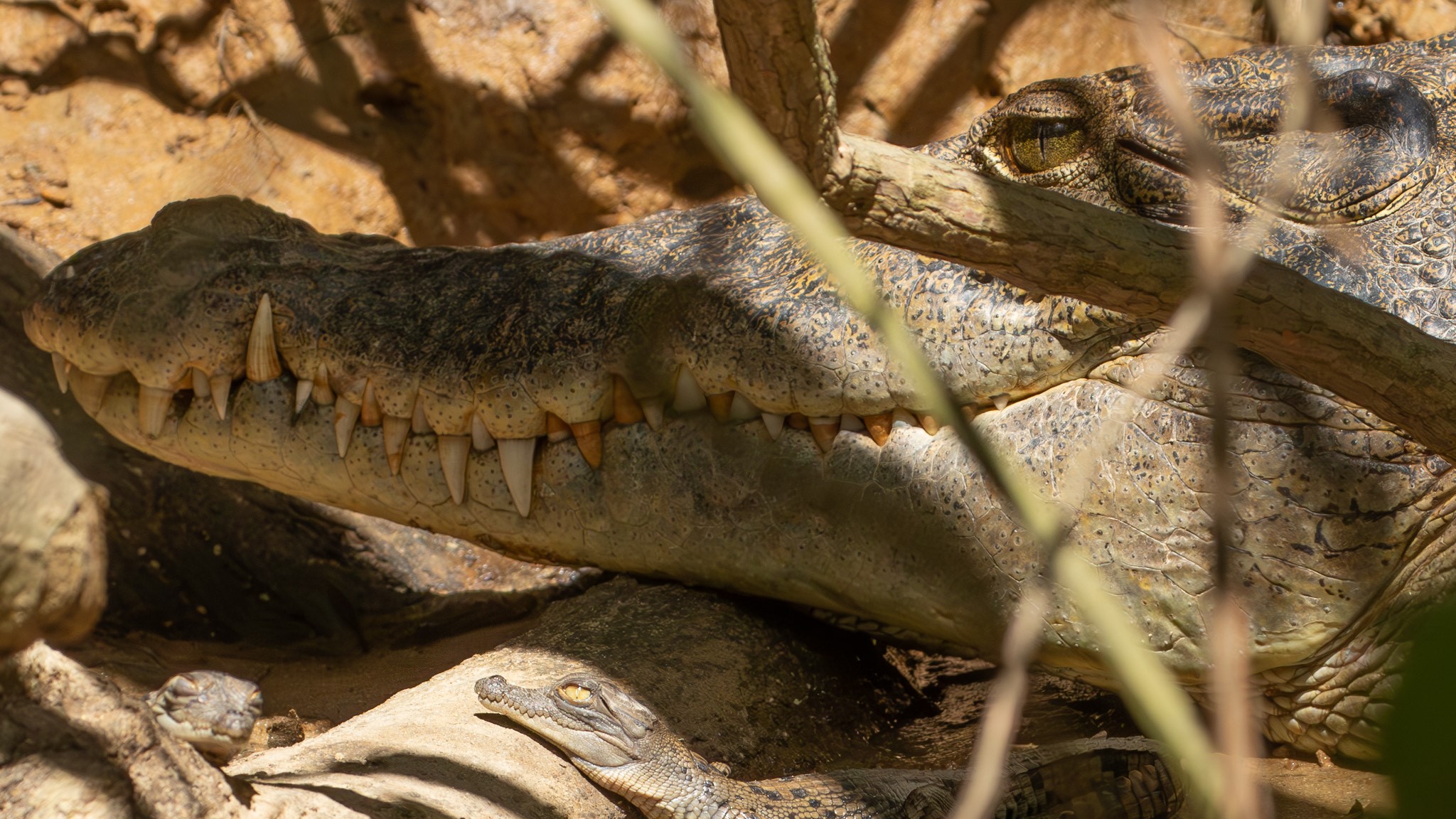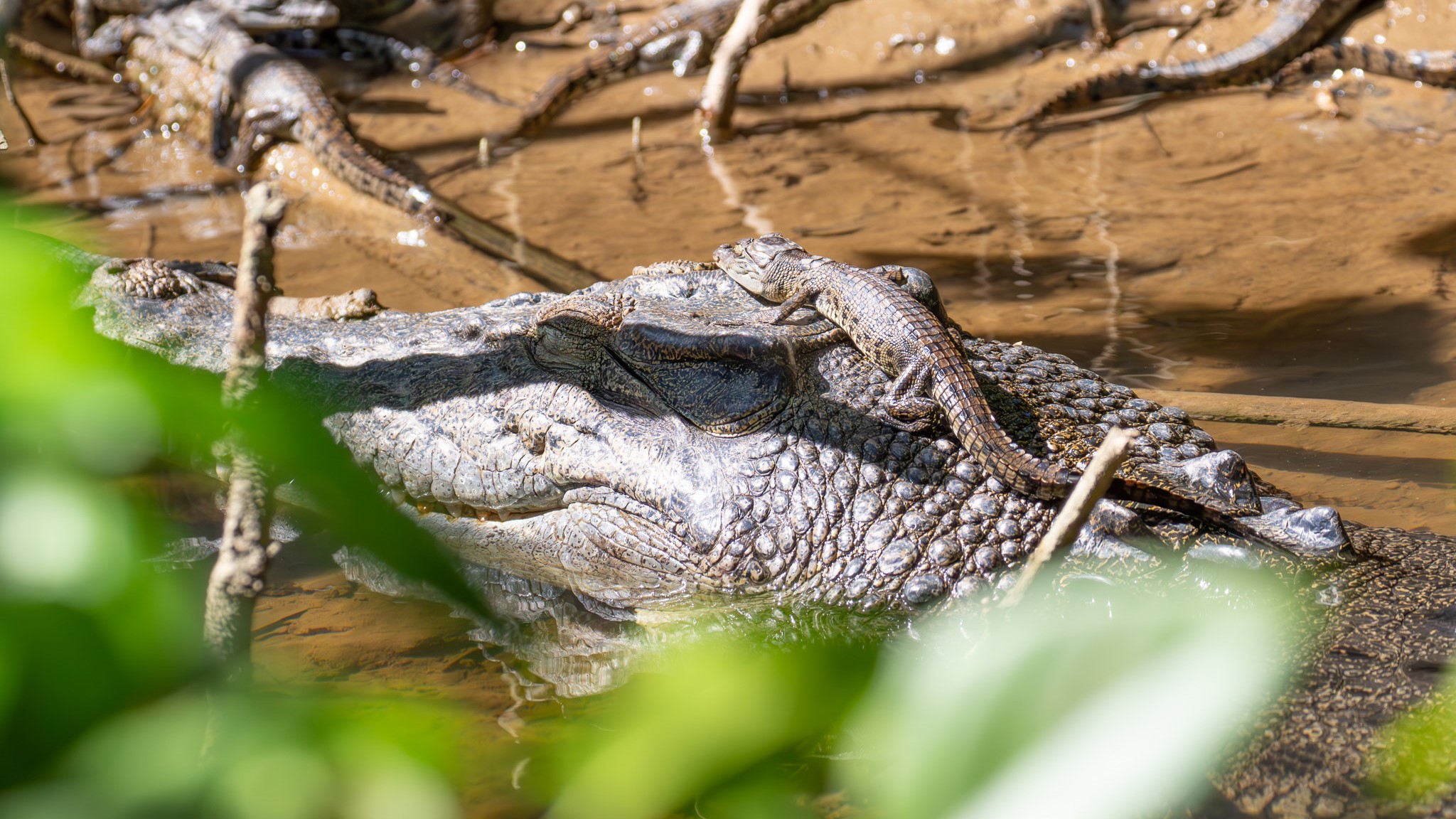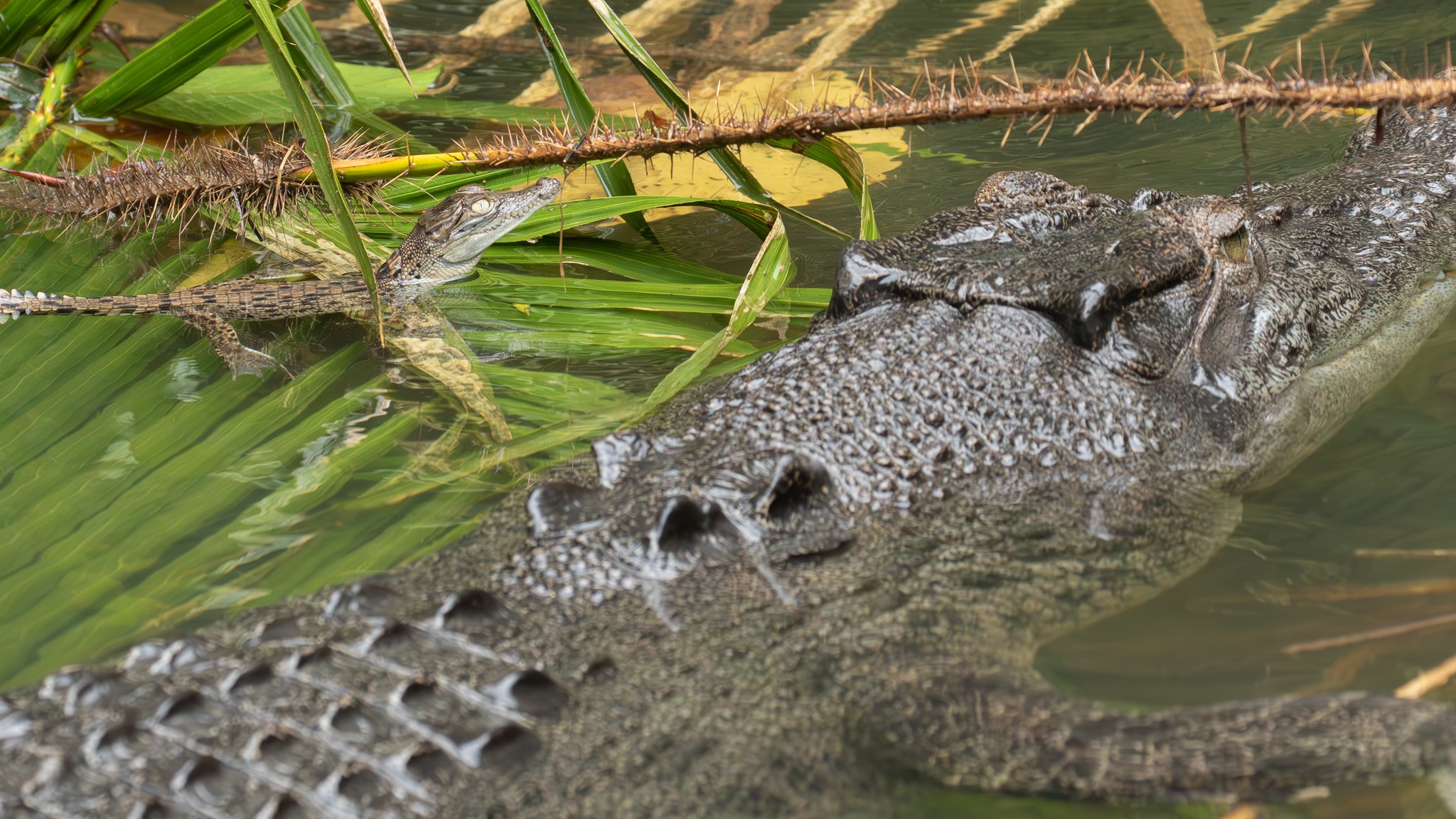
Trouble is brewing in Australia's "Croc Country" after a female crocodile was found "fileted," with only her head and spine left behind.
Local tour guides spotted the butchered carcass on May 18 on the banks of the Daintree River, Queensland. The death marks the second mysterious crocodile killing in recent months, following the discovery of a gigantic male with its head torn off on a beach in Cow Bay.
The latest crocodile corpse was found 5 miles from the site of the beheaded crocodile.
A local wildlife tour guide told Live Science he received an anonymous phone call from a person claiming they killed both crocodiles to prove that humans are the apex predator. "He knew exactly where her body was left, the exact position, and also said he fileted her up but didn’t want her head as he had the bigger head already," David White, the operator of Solar Whisper Daintree River Crocodile and Wildlife Cruises, said in an email.
The Queensland Department for Environment and Science (DES) said experts were unable to determine the recently killed crocodile's cause of death. Crocodiles in Queensland are a vulnerable species and are protected by law. "It is unlawful to deliberately harm or kill crocodiles or be in possession of a deceased crocodile or parts of a deceased crocodile," a DES spokesperson told Live Science in an email.

When the Daintree River guides first saw the latest carcass, they thought that a male crocodile vying for territory had slaughtered the female. But upon closer inspection, they became doubtful. "Some other guides that saw her remains and some experienced croc people asked for the photos and thought it was strange," White said.
White said he last saw the crocodile — a nearly 9-foot-long (2.7 meters) female he had named "Lizzie" — alive on May 11. Her head and spine were found a week later, dumped beside his boat on a riverbank that neither she nor other crocodiles were known to frequent.
White noted it was surprising that Lizzie was missing for a week before the carcass was found, as crocodile carcasses tend to float on the water’s surface or wash up soon after the animal has died. "This river is used a great deal and there was no bloated body."
The clean-picked remains also raised eyebrows. "The state of her body was strange, she was just an intact spine and a face and nothing else," White said. It didn't look as if another crocodile had attacked Lizzie, because they "break off bits by twisting, turning and smashing the prey, so we think that if she was killed by a croc, the head would have been damaged and the spine eaten," White added.

Then came the phone call from someone claiming to have slaughtered both Lizzie and the crocodile in Cow Bay. White said the caller knew details about where Lizzie's remains were found that he had not made publicly available. The caller claimed to have "fileted her like a fish and fed her to his dogs," White said.
Removing a large, mature crocodile from an ecosystem can cause an imbalance in the local croc society. When the headless Cow Bay crocodile was found, Cameron Baker, a postdoctoral researcher at Charles Darwin University in Australia, told Live Science: "It will likely represent a period of social unrest and change in the population as individuals try to determine where they sit in the new social hierarchy resulting from this large male's loss."
The loss of a female has different implications. Lizzie was a roughly 40-year-old breeding female — "the best mom of any croc on the river," White said. "She once had some runts that never grew and she remained with the creche for seven months instead of the 1-3 months average. She also adopted a baby in a year she didn’t nest and sat with it every day."
The removal of a mature, breeding female from the ecosystem could mean that younger females start nesting sooner, according to a 1989 IUCN report.
White said the other crocodiles on the river seem unsettled of late, but he added this could be due to an ongoing power struggle between two males, including one they initially thought had killed Lizzie. "I am of course worried about all the other crocs on the river," he added. "They are habituated to ignore us, so every one of them is a sitting duck."







